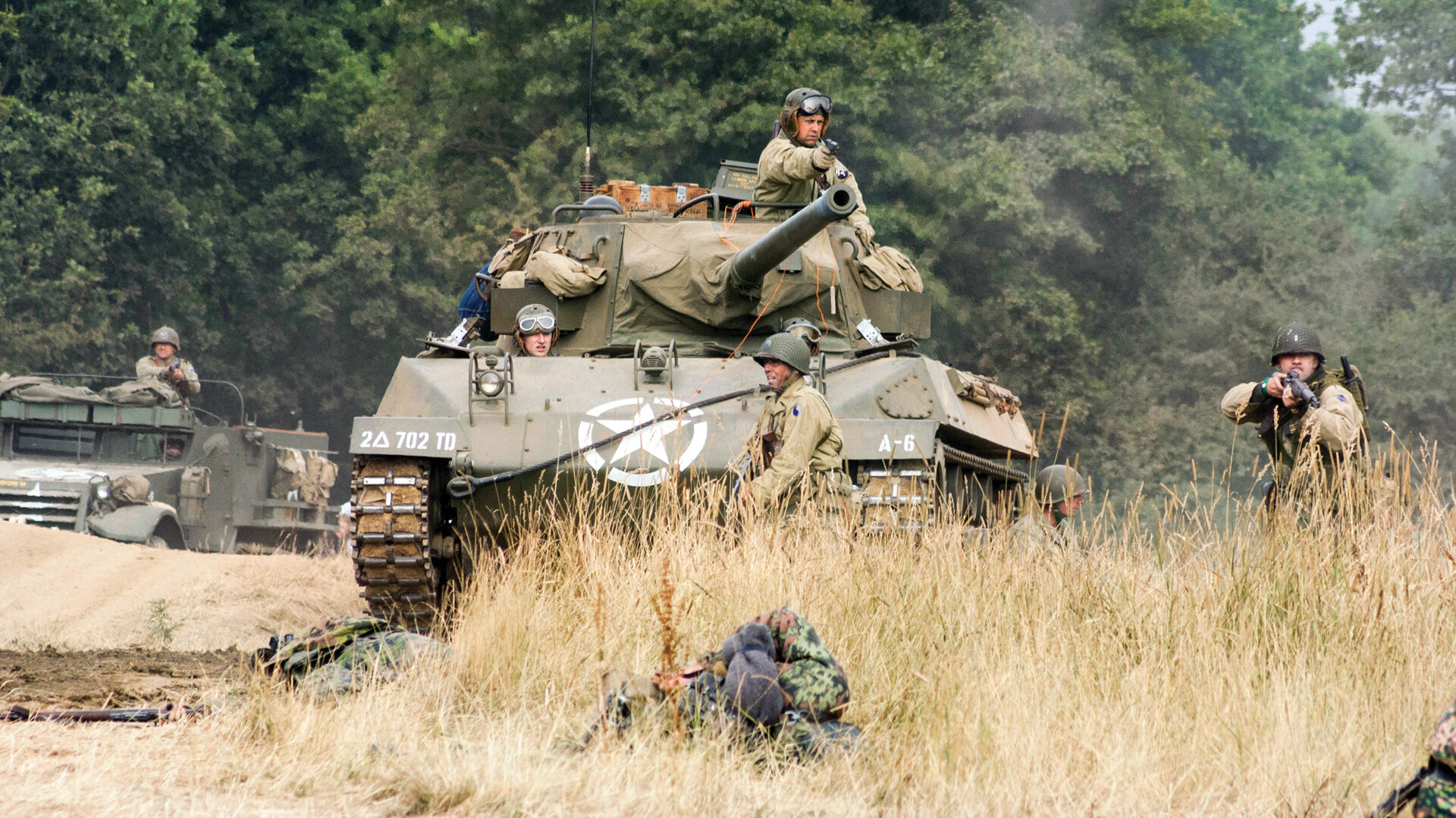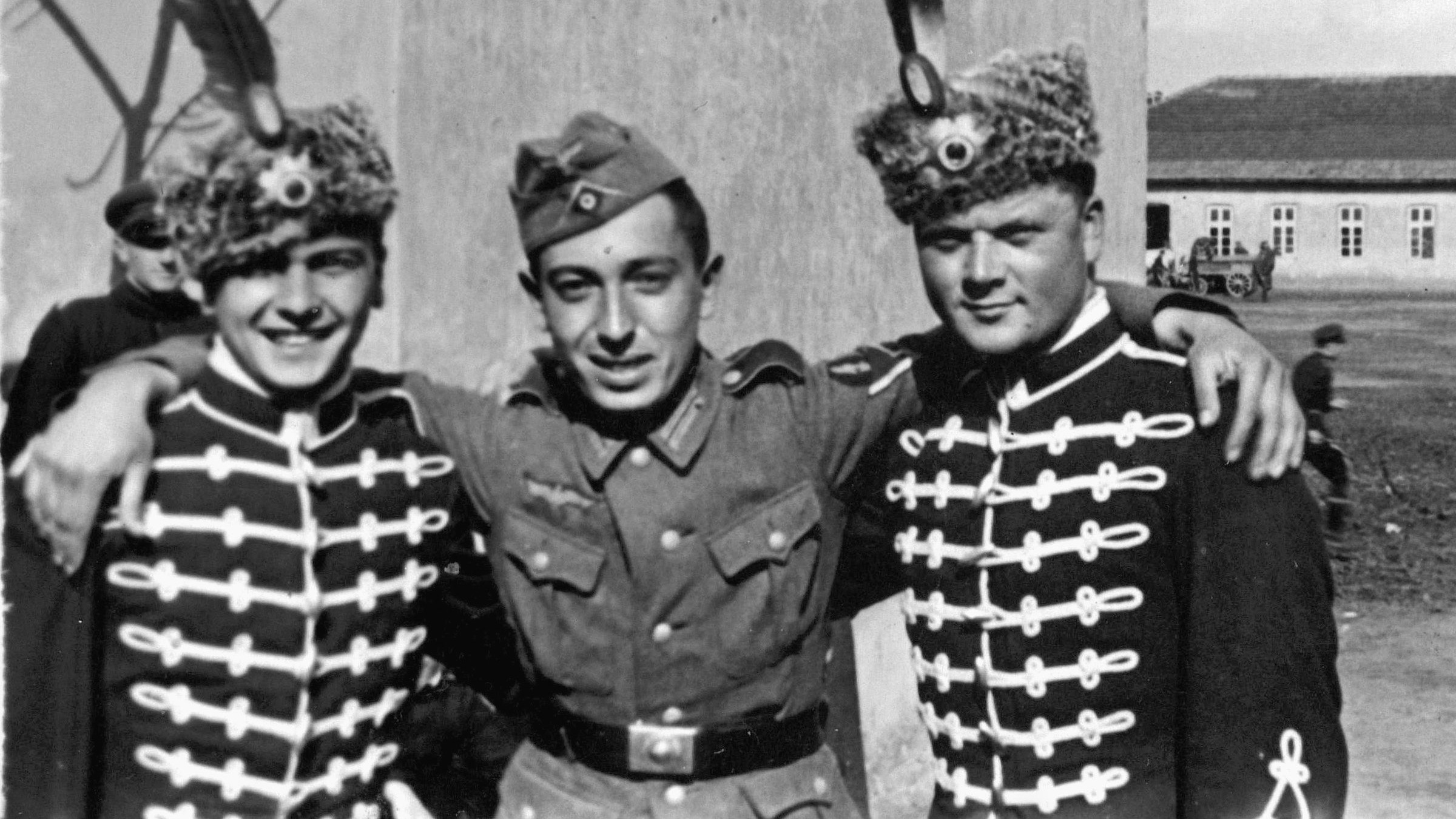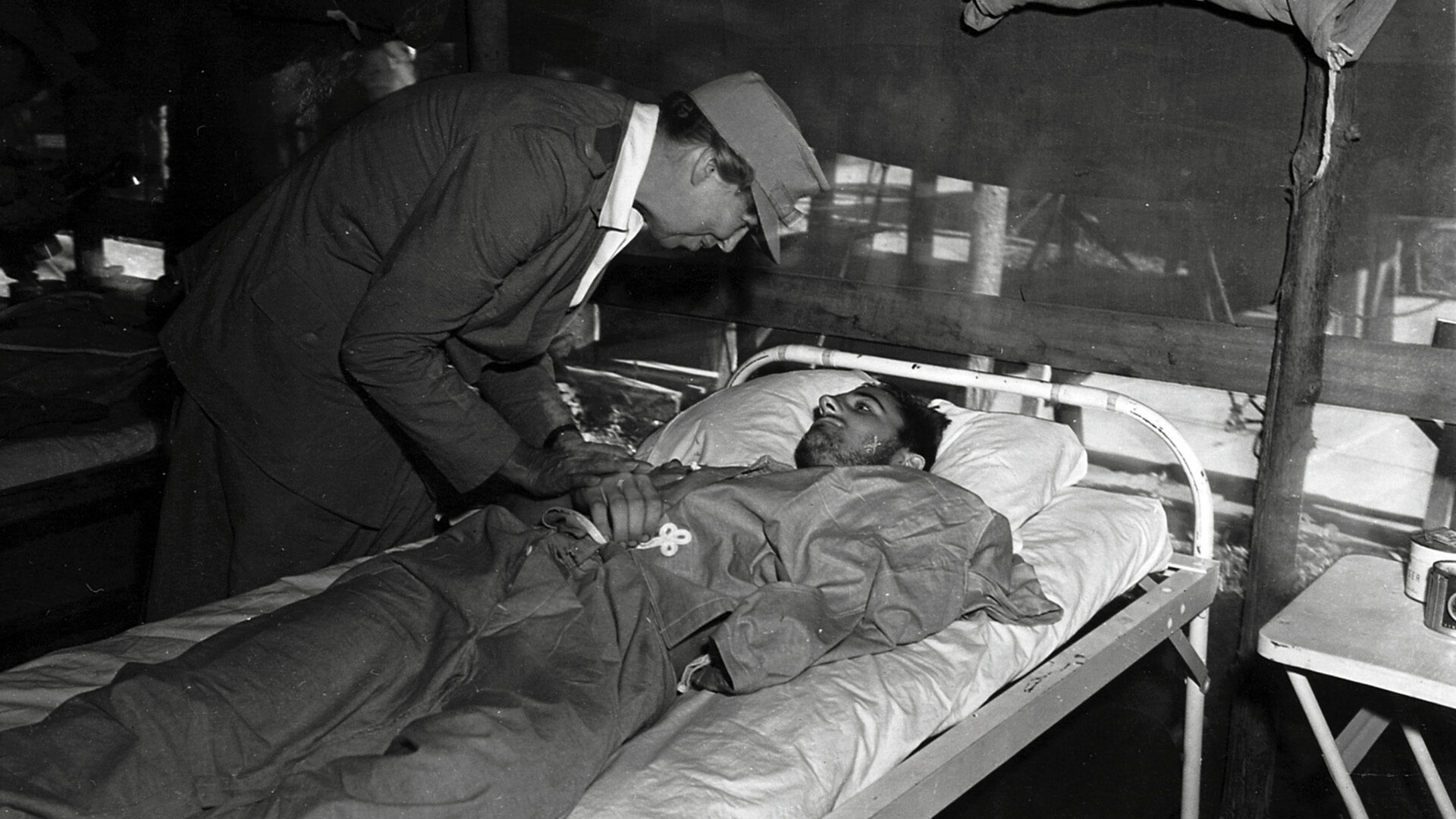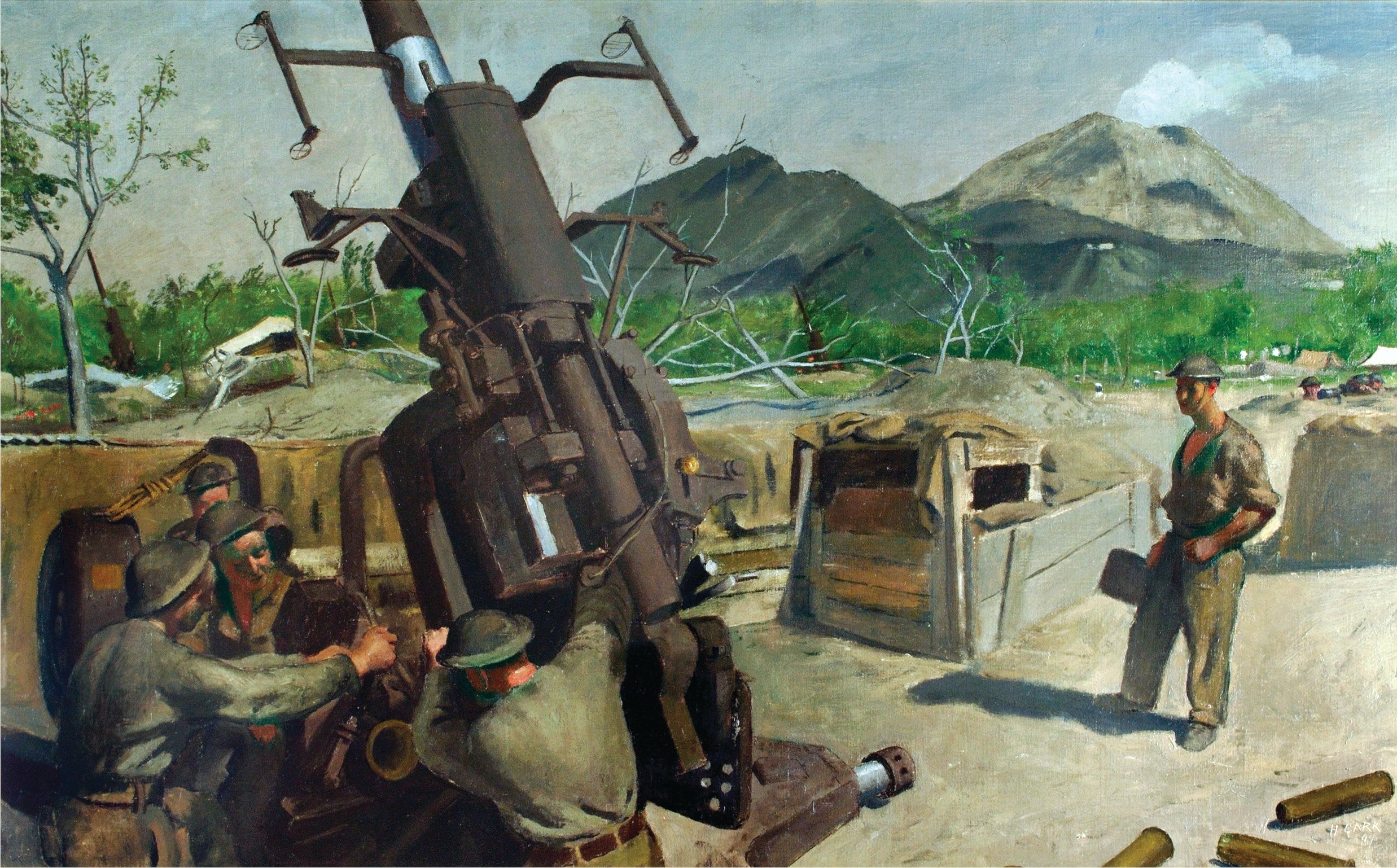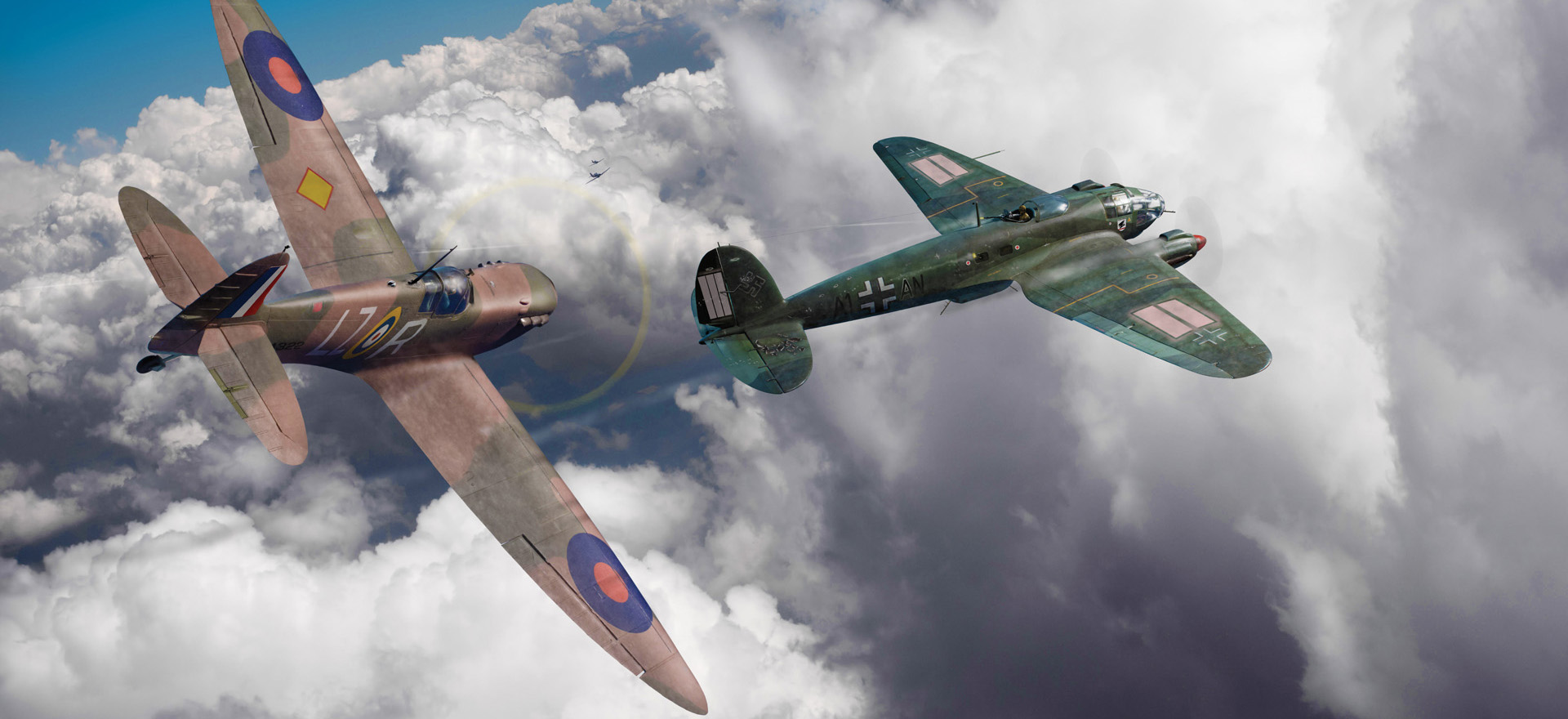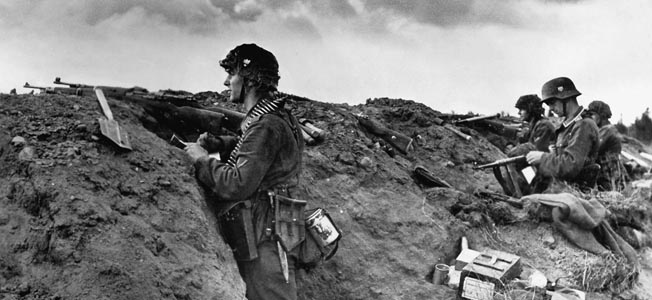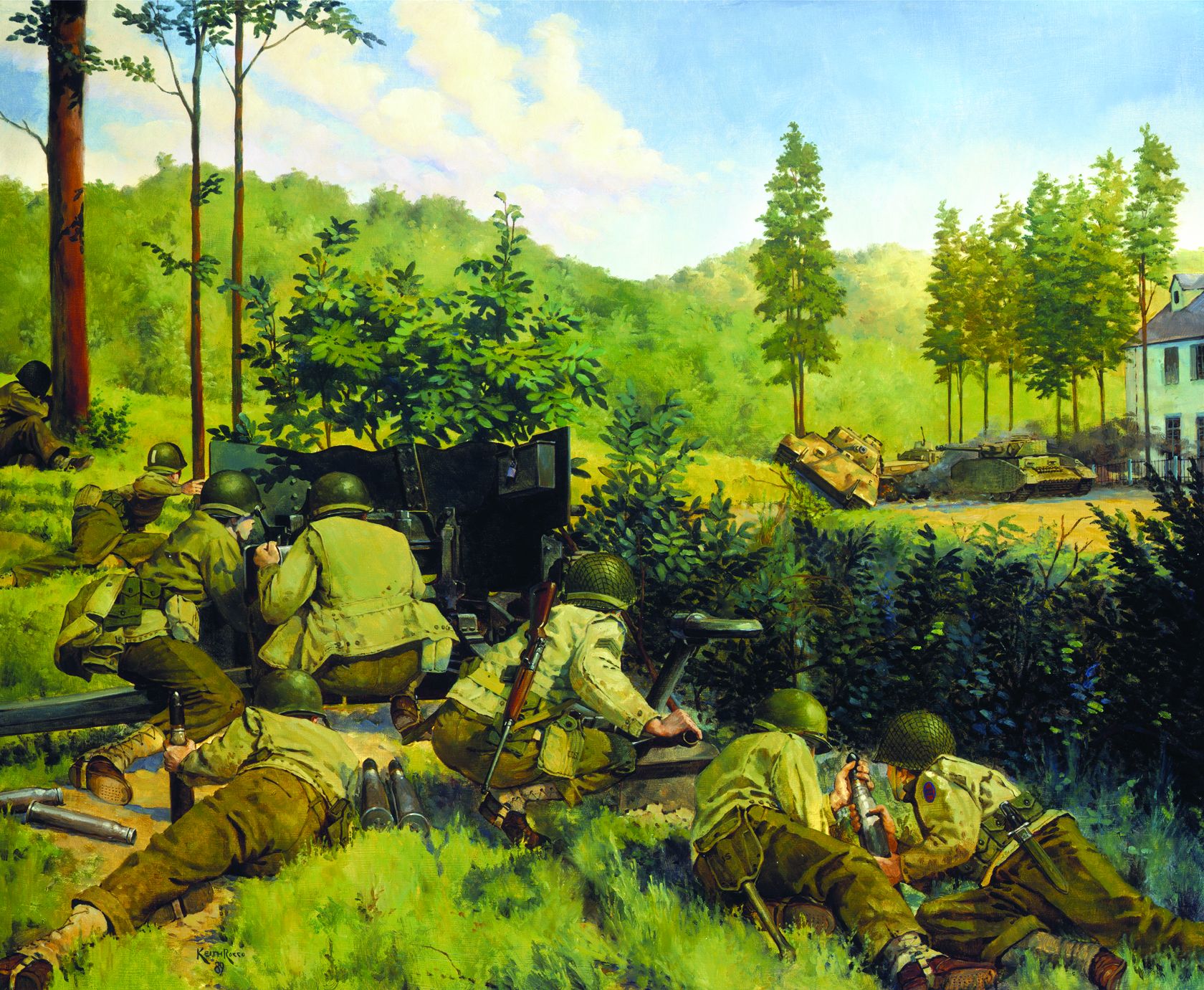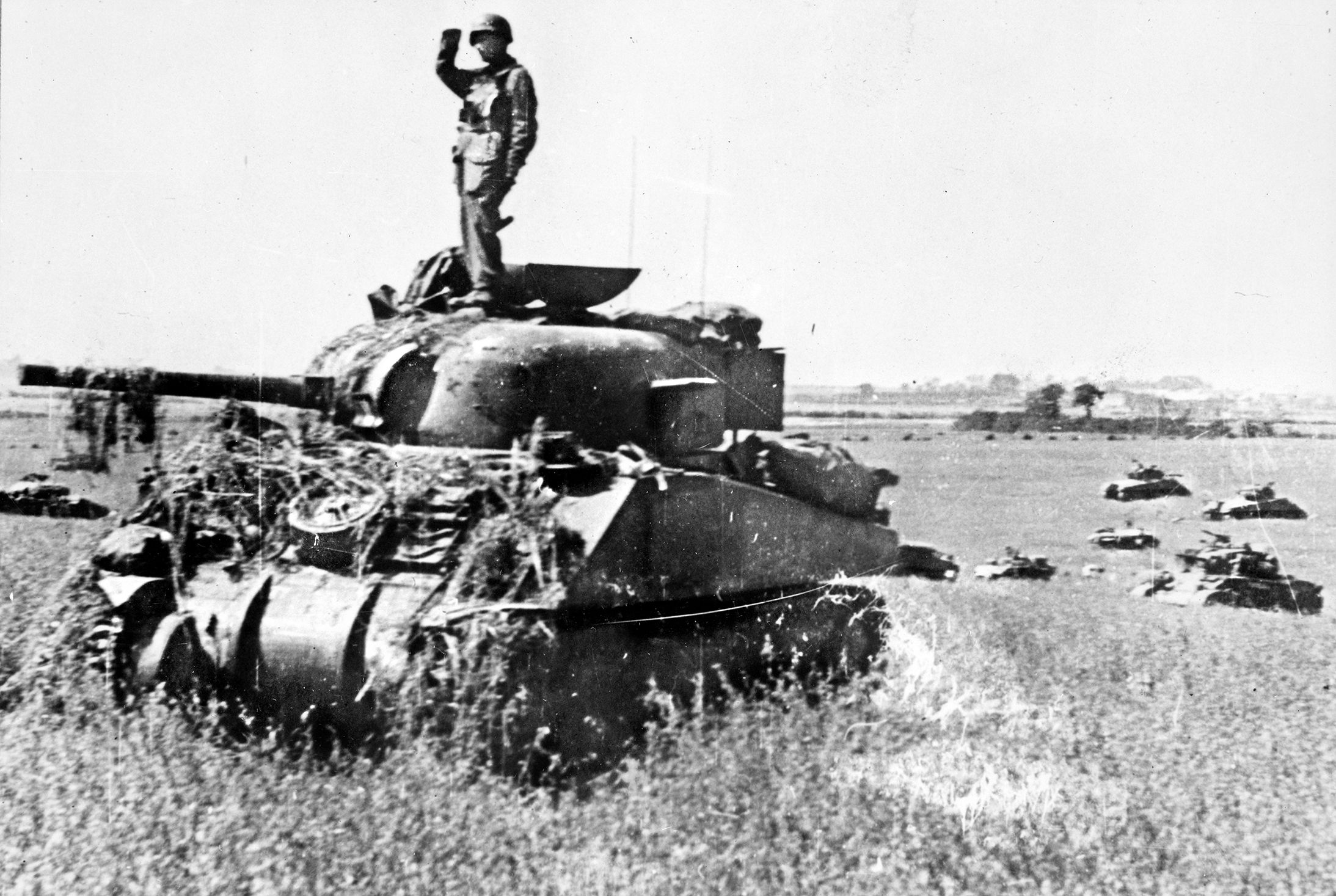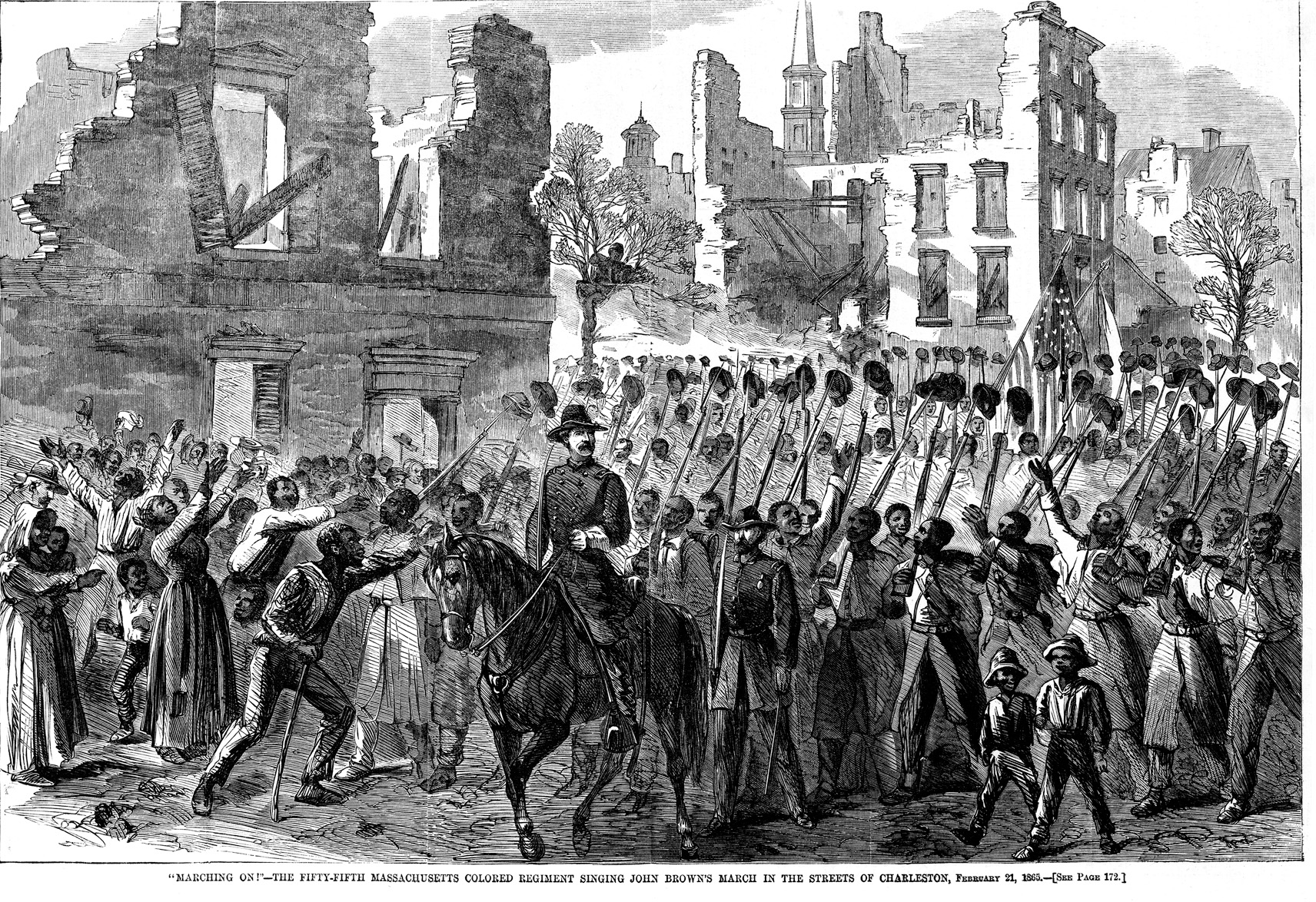By William F. Floyd Jr.
In 1940, existing U.S. Army tactical doctrine called for a cordon of towed antitank guns to defend against an enemy tank attack, but army planners studying the Battle of France in May of that year realized that a tactical plan of that nature was outdated and likely would not thwart a large-scale armor attack. One of the principal concerns was that infantry lacking reliable antitank capabilities would likely panic when confronted with enemy armor bearing down on it in large numbers.
Army Chief of Staff George C. Marshall subsequently tasked his subordinates in April 1941 with developing a plan for using specialized mobile antitank units to counter massed armor attacks. Marshall believed that the special formations would be able to rapidly move forward to prevent a breach by enemy armor attempting a blitzkrieg attack.
Marshall appointed Lt. Col. Andrew D. Bruce of the planning branch of the War Department’s G-3 office to establish the mobile antitank force. That month, the U.S. Army Ordnance Department issued an immediate requirement for a tank destroyer mounting a 37mm gun. The Army subsequently approved the development of the M6 37mm gun-motor carriage (GMC) and the M3 75mm GMC. The former mounted a 37mm gun that fired over the rear of a standard three-quarter-ton truck, while the latter mounted a World War I-era French 75mm gun firing over the front of an M3 half-track. The M3 75mm GMC was the first design fielded, and the Army began using it in war games shortly after it was delivered in October. At that time, the Army changed the phraseology from “antitank” to “tank destroyer” based on the change in tactical doctrine.
Bruce, however, was unsatisfied with these concepts. He envisioned a tracked vehicle that would be faster and mount a gun more powerful than those found on enemy tanks. Bruce believed this could be achieved by deliberately outfitting such a vehicle with very light armor in order not to impede its speed. Not long after the United States declared war on Japan and Germany in December 1941, the Army put out a requirement in early 1942 for what would become the M18 tank destroyer.
Production of the M18 went to the Buick Motor Division of General Motors. The publicity department at Buick introduced the stirring name of Hellcat for the tank destroyer.
The initial requirement for M18 tank destroyers in November 1943 was 1,000 units. When Buick finished these in January 1944, the Army awarded a second contract for 1,800 more. Buick would eventually build 2,507 M18s during World War II.
The U.S. Army Tank Destroyer Center requested significant modifications after trials performed with the vehicles. One of the more nagging design problems concerned the shock absorbers. This was corrected with reconfigured, heavy-duty shock absorbers.
The Army’s Tank Destroyer Center shipped two trial models to the 601st Tank Destroyer Battalion. It also shipped three of the models to the 894th battalion at the Anzio beachhead. After inspecting the new tank destroyers, the 894th battalion decided not to deploy them for fear that their weak armor would make them too vulnerable in head-to-head combat with German armored vehicles. They were deployed instead in the battalion’s reconnaissance company.
The evaluation of field reports from the tank-destroyer battalions in fall 1944 led to additional official request for improvements to the M18, with special attention paid to turret covers, co-axial machine guns, muzzle breaks, and still-heavier shock absorbers. Other improvements were increased ammunition storage, decreased ground pressure, and an improved travel lock. Many of these improvements were not incorporated into the design until late 1944, during the final production run. The final production version of the M18 also had a wider, 21-inch track configuration.
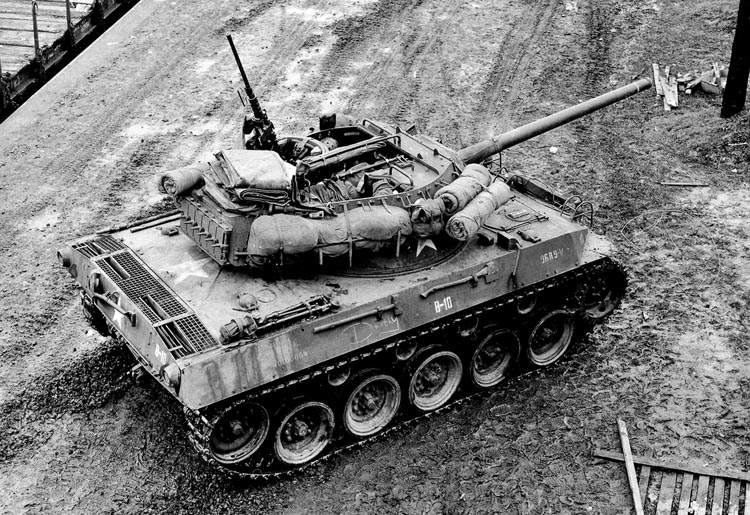
The Army continued to have genuine concerns about the lack of armor protection on the M18, despite the initial concept of a lightly armored tracked vehicle capable of higher speeds than tanks. It concluded in August 1944 that supplementary armor that would add one ton to the vehicle’s weight would not adversely influence its speed and mobility. A kit was designed which would add armor over the turret; however, no immediate action was taken to retrofit the vehicles already in service.
At the time of the D-Day landings on June 6, 1944, there were only 30 tank-destroyer battalions in England. The M18 battalions were first committed in battle in late July, when Lt. Gen. George Patton’s U.S. Third Army joined Operation Cobra. Patton’s objective was to exploit the gap in German lines created by Lt. Gen. Courtney Hodges’ First Army.
During their first month of combat, the M18s saw very little fighting, and they were mostly used in roles for which they had not been intended. For example, they were used to protect motorized supply columns and to furnish direct-fire support to infantry units.
The first major action in which the M18 tank destroyers were used for their intended purpose occurred in the middle of September 1944, when the 4th Armored Division, which was spearheading Patton’s advance through the Lorraine region of eastern France towards the Saar River, encountered the powerful German Mark V Panzer tank. The Americans quickly learned that the M18 could not knock out a Panzer from long range with its 76mm gun because of the Panzer’s substantial armor. To destroy a Panzer, the M18 had to close to within 300 yards or less in order to penetrate the Panzer’s mantlet (the armor plate attached to the Panzer’s 75mm gun).
In September 1944, the tank-destroyer units encountered a number of Panzer battle groups in combat. At the end of these encounters, the M18s were credited with destroying 39 Panzers, while losing only four M18s.
Early feedback from crews using the vehicle in combat indicated that it could go hundreds of miles under trying conditions without requiring major repairs either to the armaments or the engine. Crews reported only having to perform minimal maintenance on the vehicle’s moving parts.
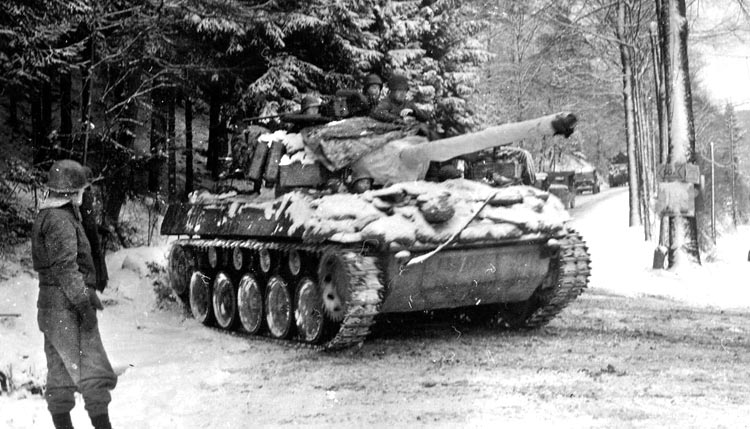
One of the most oft-voiced complaints about the M18 concerned the configuration of its .50-caliber machine gun. The machine gun was mounted on the M18 in such a way that the vehicle commander had to expose himself to enemy small-arms fire and shell fragmentation to operate it. Many tank commanders were wounded or killed because of this inadequate protection.
Relatively few M18 Hellcats had been deployed in the European Theater of Operations through the fall of 1944. By October, there were five battalions. In December, there were still only nine. The slow growth of the M18 units was due to their problems with firepower: The 76mm gun on the M18 was no better in antitank combat than the 3-inch gun on the M10 tank destroyer. Indeed, many crews preferred the M10 because of its better configuration and the superior functionality of its fighting compartment.
Crews of the M18 still had a high regard for some of the design features of their tank destroyers. They spoke favorably of its turret system, larger access door, and features that enabled easier repair of the engine. What’s more, the crews liked the M18’s light weight and its ability to traverse mud and snow compared with the heavier M10.
The inadequacy of the 76mm main gun against the German Panzer would lead to urgent requests for better antitank ammunition. Ordnance had been working on a new class of high-velocity armor-piercing ammunition since 1943. In this new type of round, the outer shell was peeled away on impact, and the smaller tungsten carbide core penetrated the armor. Performance tests against Panzer-strength armor plate revealed that this HVAP round was superior to the standard M62 APC round. The main problem with this type of ordnance was the scarcity of tungsten, a critical war material that was in very short supply. The first distribution of the improved ammunition occurred on September 11, 1944. Tank and tank-destroyer crews had a high regard for the new ammunition, but it was never available in adequate quantities during the war.
The German offensive in the Ardennes region that began on December 16, 1944, put the tank destroyers to a major test. The 705th Tank Destroyer Battalion, attached to the 101st Airborne Division, went toe-to-toe with German panzers during the defense of Bastogne. It faced a major battle on December 25 against German reinforcements making a desperate bid to seize the town. A group of 15 Panzer Mark IVs with grenadiers riding on them penetrated the defenses of the 327th Glider Infantry, but was it wiped out by the M18s and paratrooper bazooka fire. Intense fighting around Bastogne on Christmas included a number of encounters with German Panzer tanks. By the end of the day, the M18 battalion had knocked out 27 panzers at the cost of just six M18s.
By early April 1945, 12 tank-destroyer battalions in the 12th Army Group were using the M18, which continued in operation until the end of the war. In the Pacific Theatre of Operations, there was far less demand for tank-destroyer battalions. The main reason for this was that the Japanese tank threat was far less significant than the German tank threat in Europe. In addition, the M18’s inadequate armor limited its capability to perform other functions within the Pacific Theater. The tank destroyers were not well-received by their operators in the Pacific because the open turret exposed them to Japanese infantry attacks. As a result, tank-destroyer tactics in the Pacific involved stand-off combat, in which infantry protection compensated for the vehicle’s vulnerability.
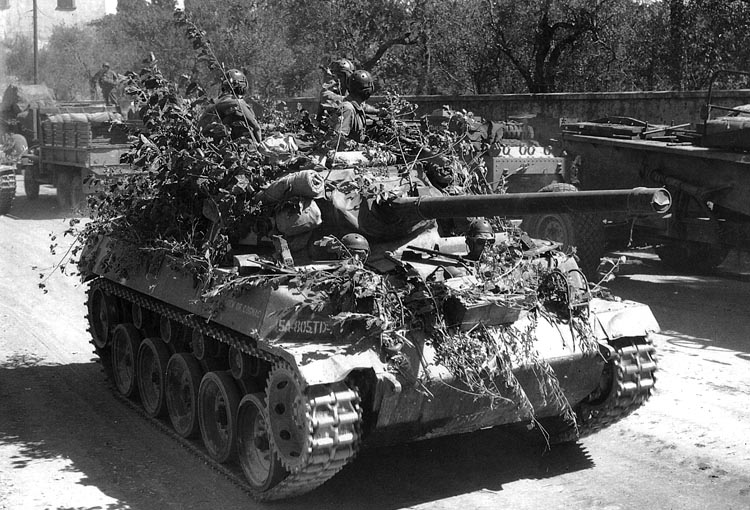
The first unit that included the M18 in the Pacific was the 637th Tank Destroyer Battalion. This unit first went into combat in January 1945 in the Philippines, taking part in operations on Luzon. They would also see action in the fighting for Manila during much of the savage street fighting. For its role in Manila, the battalion received the Presidential Unit Citation. The M18 saw little action in the invasion of Leyte that began in October 1944, but it was used with some degree of success during the le Shima phase of the Okinawa campaign the following year.
The final assessment of the M18’s design was that it was a disappointment. The engineering of any armored fighting vehicle has to involve compromises between firepower, speed, and armor protection. This was particularly true for the U.S. tank destroyers, given that the weight restrictions placed on their respective designs meant even greater compromises in firepower or armor protection.
Of course, the first role of a tank destroyer is to destroy enemy tanks. With regard to the M18, it did not have sufficient firepower to carry out its mission. Bruce’s obsession with speed had negatively affected the design and resulted in a poorly balanced vehicle, owing to a flawed tactical doctrine that completely ignored the evolution of the enemy’s sophisticated armor capability.
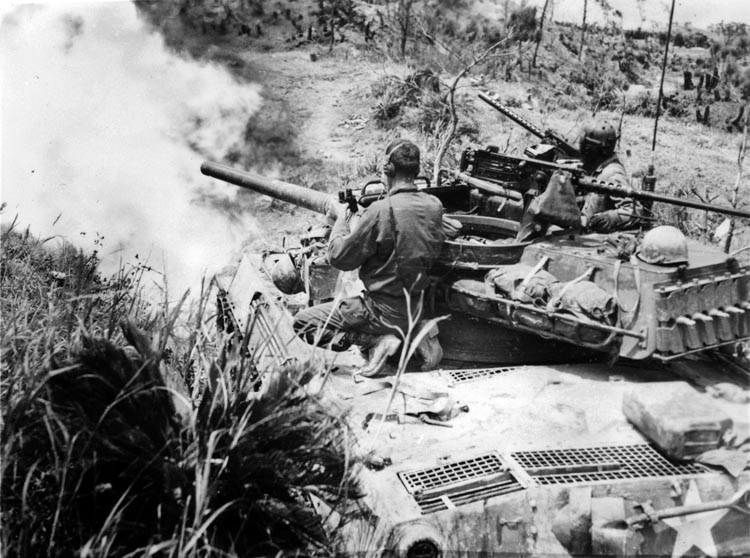
The U.S. Army Tank Destroyer Command, for all intents and purposes, had pursued the wrong balance. From the time it came into service in 1944, the M18 was incapable of defeating the later-designed German tanks in normal combat conditions. Tank-destroyer crews had to quickly learn how to perform exceptional maneuvers. Even though many of the M18 crews liked the Hellcat’s high road speed, there is little evidence that these speeds resulted in a significant advantage on the battlefield. High road speed has little to do with mobility in off-road combat.
Additionally, the M18’s thin armor and open-turret roof did not encourage experienced crews to speed forward when involved in close combat as anticipated, but rather to move in more slowly and be more cautious to avoid exposure to enemy sniper and artillery fire. These design shortcomings, combined with an unrealistic combat doctrine, meant that M18 battalions were not primarily used for tank fighting, but were more apt to be used in alternate roles for which they were not particularly suited.
The M18 crews did have many successes, but these were mainly due to the crew’s ingenuity and ability to improvise, not the weapon they were given to work with.
The quest of building a superb tank destroyer ultimately eluded the U.S. Army in World War II. Although the name Hellcat called to mind a ferocious beast, the M18 was unable to live up to such a reputation against formidable German armor.
